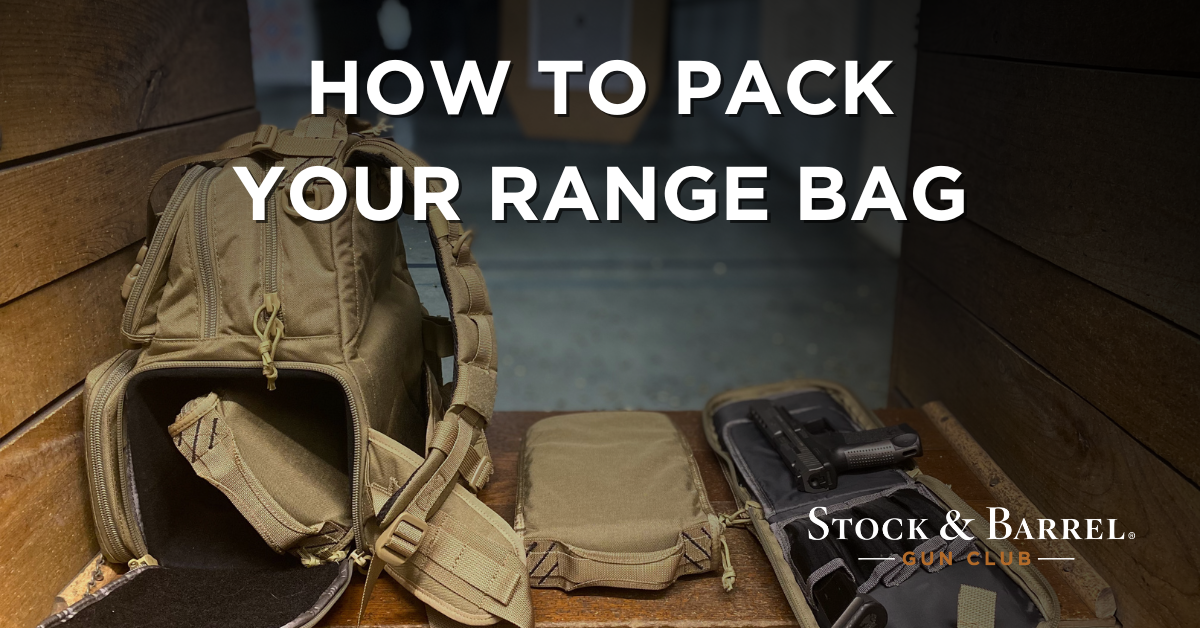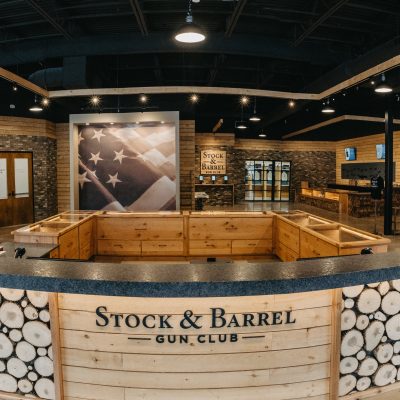Packing your range bag is like packing your suitcase for a trip. You need to strike a balance between having everything you could possibly want and having a bag that’s still portable and of reasonable weight. So how do you achieve a balance? Whether you spend the money on a high-end dedicated range bag or haul your shooting gear in a tackle box, there are plenty of options out there for how to carry your equipment. But the question remains: what exactly do you need to have with you, besides guns and bullets, to ensure a smooth shooting session?
JUST WHAT YOU NEED
In addition to the guns you’ll be shooting and appropriate ammunition, there are a few other items that we think are critical to have with you any time you have an outing with firearms. First and foremost, have some safety supplies. In addition to hearing and eye protection, keep a box of bandages for cuts and scrapes, some sort of disinfectant—hand sanitizer stings, but is cheap and works great—and maybe some over-the-counter pain killers like aspirin or ibuprofen. We would also highly recommend some form of trauma-focused first aid kit. Accidents happen, and range accidents are worse than most. Tourniquets, pressure bandages, and clotting gauze are all excellent tools to stop serious bleeding. But this comes with a caveat – only pack medical gear you know how to use properly. If you shoot regularly, and don’t know how to apply a tourniquet or pack an abdominal wound, there are now lots of places to get training. There is even a national campaign called Stop The Bleed that offers free classes around the country to train everyday people in the basics of trauma wound care. This is especially important if you are not shooting at an established range. Many shooters practice on their own in rural areas far from immediate medical aid. If this applies to you, the importance of a medical kit is amplified greatly and could mean the difference between life and death in the event of an accident. On that note, if you are shooting somewhere off the beaten path, make sure you have a way to know or relay your location. Whether that’s a mile marker post from the nearest highway, or GPS coordinates, make sure you know where you are so that help can reach you if you ever need it.
Once you have the right tools to keep yourself and your shooting partners safe, think about what you need to keep your guns running smoothly. A bottle of your preferred weapon lube, an optics cloth (if your guns have scopes or red dots) and some small tools should be staples in your range kit. Companies like Fix-It Sticks and Multitasker make tool sets specifically for firearms, but a pocket bit-driver set from the hardware store will accomplish much of the same. A cleaning rod to remove stuck cases or squib loads lodged in the barrel is also critical, so you don’t wind up with an unusable firearm five rounds into your range day. Cleaning supplies like solvent or bore snakes will also help clear up minor maintenance issues that may creep up on you.
FOOD FOR THOUGHT
Once you’ve protected yourself and your firearms, expand your planning outward to convenience or routine-use items. Shooting outdoors? Sunscreen and insect repellant are great to have as live-in components to your range bag. Spare batteries for electronic optics or hearing protection. If you use paper targets, you’ll want a staple gun with extra staples, or a can of spray-on adhesive. If you prefer steel targets, a can of spray paint to re-face your plates is likewise handy to have. Rags for cleaning or sweat removal also make things a little easier and more comfortable. If you shoot in an open area known by hunters, a safety vest couldn’t hurt either. Finally, food and water. You may be able to shoot for hours on end without worrying about a meal, but not everyone is. Especially if you’re taking a spouse, child, or casual shooter with you, a couple of bottles of water and a fistful of snacks will go a long way to keep everyone happy and focused. This is also great if you’re out on your own and get stranded somewhere.
If you are shooting on a public range, a quick reference card of your personal emergency contacts will hopefully never be needed but could make all the difference. Taped to the outside of a tackle box or hung off your bag handles with a luggage tag, giving range staff or bystanders a way to notify your loved ones is an ounce of prevention that could save you additional heartache later. If you happen to have NFA-registered items with you like short-barreled rifles or suppressors, make sure you have copies of all the appropriate tax stamps in case you are questioned by range staff or law enforcement. A small binder or stapled-together stack of every tax stamp you have will keep you from having to fish out individual ones from your master library at home. Finally, magazines for your guns should be treated as consumable items. They can and will fail over time, and they will break if dropped enough times during reloads. Keeping extras in your range bag will make sure you don’t have to call it quits early because you can’t feed the machine.
Many folks carry their firearms to and from the range in their range bag. In Minnesota atleast, this isn’t legal. In MN your firearm must be unloaded in a lockable case made for a firearm (doesn’t need to be locked) and not within easy reach of the drive. It’s also a best practice to have your ammo separated from your firearm. Therefore, it’s best to check your local firearms laws on how you can legally bring your firearm to and from the range.
While this list is by no means exhaustive, it should provide you with a place to start from when packing your range bag. Regardless of what guns you shoot, or where you shoot them, a properly-packed range bag could mean the difference between a fun day at the range and a string of headaches that leave you muttering to yourself behind the wheel all the way back home.
OTHER BLOGS YOU WILL FIND OF INTEREST:
- What to Know When Traveling with Firearms
- Range Training without the Range
- Why Choose an Indoor Range
CLASSES YOU MAY BE INTERESTED IN:
- MN Multi-State Permit To Carry in Chanhassen or Eagan
- Clearing Handgun Malfunctions in Chanhassen or Eagan
- AR 15 Maintenance in Chanhassen or Eagan





